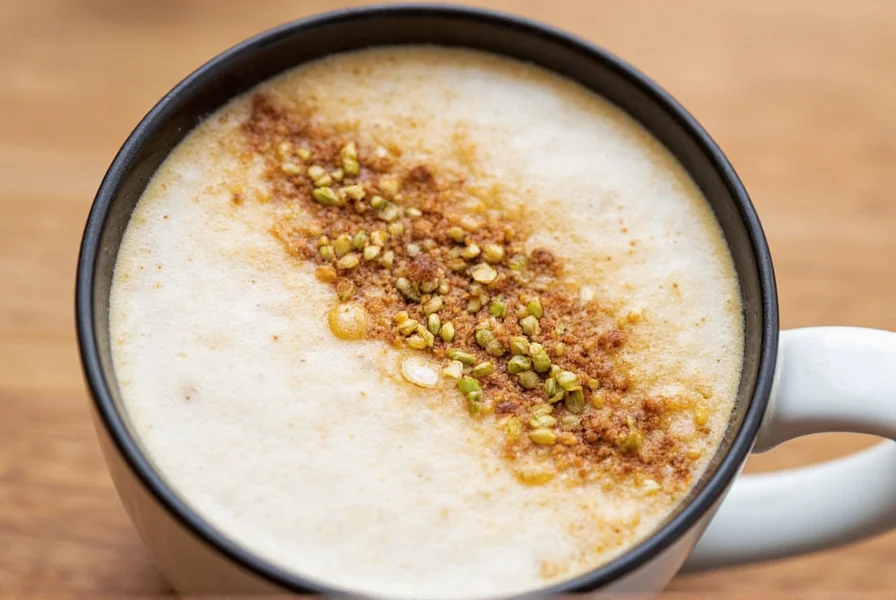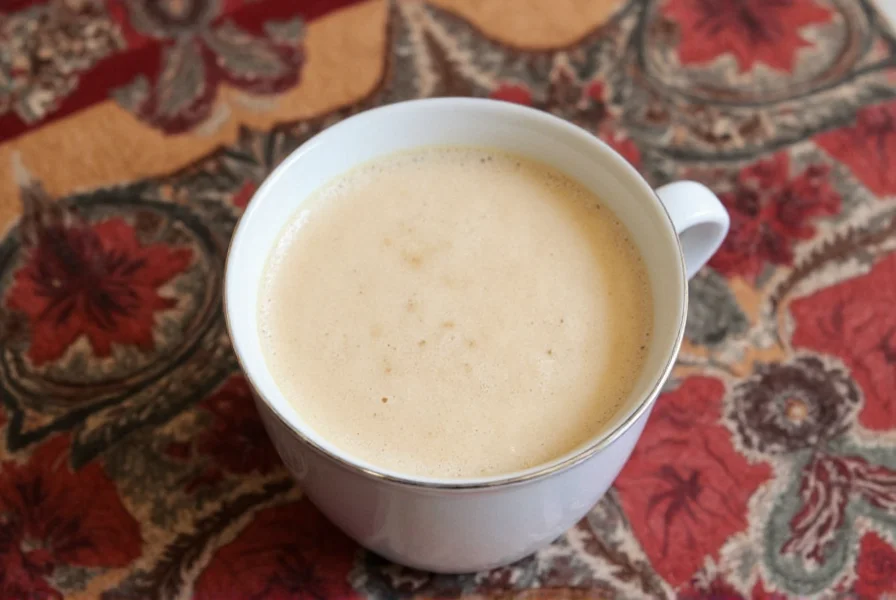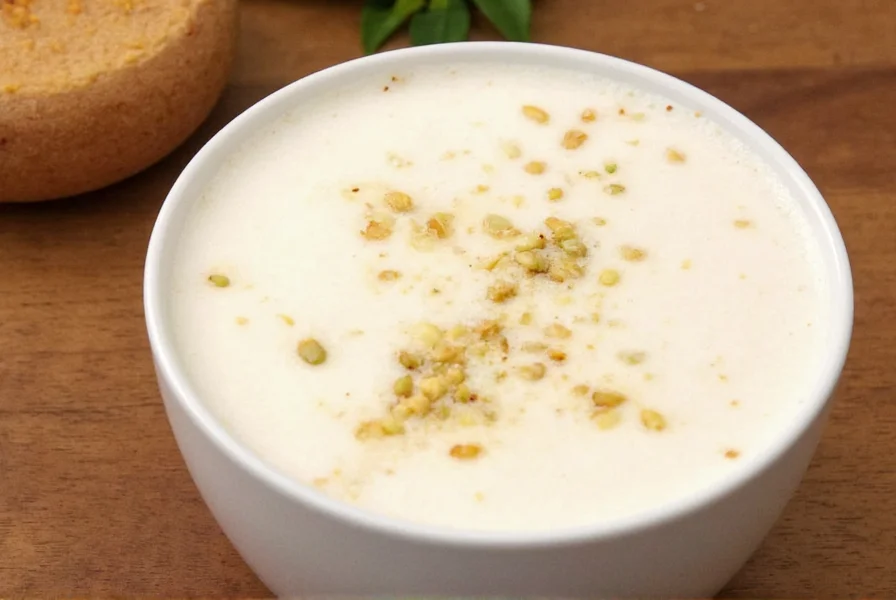Cardamom lattes have gained global popularity as coffee enthusiasts seek sophisticated alternatives to conventional flavored coffees. Unlike artificially sweetened seasonal offerings, authentic cardamom lattes derive their flavor from the spice itself, offering a more nuanced drinking experience. The key to an exceptional cardamom latte lies in using high-quality ingredients and proper technique rather than relying on sugary syrups.
The Cultural Journey of Cardamom in Coffee
Cardamom's integration into coffee culture spans continents and centuries. In Sweden, where per capita cardamom consumption ranks highest globally, "kardemummekaffe" became a staple during the 19th century as trade routes expanded. Simultaneously, Middle Eastern coffee traditions incorporated cardamom into "qahwa" preparations, where the spice serves both flavor and digestive purposes. This dual heritage explains the two predominant preparation styles: the subtle Swedish approach using ground cardamom in the coffee grounds, and the bolder Middle Eastern method infusing whole pods directly into brewing coffee.

Essential Ingredients for Authentic Flavor
Creating an exceptional cardamom latte requires attention to three critical components:
| Ingredient | Quality Requirement | Why It Matters |
|---|---|---|
| Cardamom | Fresh green pods (not pre-ground) | Preserves volatile oils that provide complex citrus-floral notes |
| Espresso | Freshly roasted beans, properly extracted | Provides necessary intensity to balance spice without bitterness |
| Milk | Whole dairy or high-fat oat alternative | Creates velvety texture that carries spice aromas effectively |
Many commercial versions fail by using low-quality cardamom powder or artificial syrups that produce one-dimensional flavor. For optimal results, crack 2-3 green cardamom pods per serving just before brewing to release maximum aroma compounds.
Step-by-Step Preparation Guide
Follow this professional method for cafe-quality cardamom lattes at home:
- Gently crush 2-3 green cardamom pods using a mortar and pestle or spice grinder
- Add cracked pods directly to your espresso grounds before brewing
- Prepare a double shot of espresso (30ml) using standard extraction parameters
- Steam 180ml of whole milk to 140-150°F (60-65°C) with microfoam texture
- Combine espresso and milk, allowing cardamom to infuse for 30 seconds
- Strain through a fine mesh sieve to remove pod fragments
- Serve immediately in a preheated ceramic cup
This technique preserves cardamom's delicate flavor compounds that degrade quickly when exposed to heat. Avoid adding sweeteners unless necessary, as high-quality cardamom contains natural sweetness. For those preferring sweeter profiles, a small amount of date syrup complements rather than masks the spice's complexity.
Variations Across Coffee Traditions
Cultural interpretations of cardamom lattes reveal fascinating regional differences:
- Swedish style: Uses ground cardamom mixed with coffee grounds before brewing, producing subtle spice notes with cinnamon undertones
- Middle Eastern preparation: Infuses whole pods directly in the coffee pot, creating bolder, more medicinal spice character
- Modern cafe adaptation: Often incorporates cardamom syrup, which provides consistent flavor but lacks aromatic complexity of fresh spice
- Vegan alternative: Uses oat milk with added pinch of black pepper to enhance cardamom's bioavailability
Understanding these variations helps coffee lovers select preparation methods matching their flavor preferences. Traditionalists favor the Swedish approach for everyday drinking, while those seeking pronounced spice notes prefer the Middle Eastern infusion technique.

Flavor Pairing and Serving Recommendations
Cardamom latte's complex profile pairs exceptionally well with specific accompaniments:
- Morning pairing: Almond pastry or cardamom bun enhances the spice's nutty undertones
- Afternoon option: Dark chocolate (70%+) creates a sophisticated contrast with citrus notes
- Dairy-free version: Oat milk improves mouthfeel while complementing cardamom's natural sweetness
- Temperature tip: Serve between 135-145°F (57-63°C) to preserve volatile flavor compounds
Avoid pairing with strongly flavored foods that overwhelm cardamom's delicate profile. The ideal cardamom latte should maintain balance where neither coffee nor spice dominates, creating a harmonious drinking experience that evolves from first sip to finish.
Common Preparation Mistakes to Avoid
Even experienced home baristas make these critical errors when preparing cardamom lattes:
- Using pre-ground cardamom powder (loses 70% of volatile oils within hours)
- Adding cardamom to milk instead of coffee (fails to extract full flavor profile)
- Overheating milk above 155°F (68°C) which degrades delicate spice compounds
- Using too many pods (more than 3 per serving creates medicinal, unpleasant bitterness)
- Adding sweeteners before tasting (high-quality cardamom has natural sweetness)
Professional baristas recommend tasting your cardamom before preparation, as quality varies significantly by origin. Kerala-grown cardamom offers brighter citrus notes, while Guatemalan varieties provide deeper earthy tones. Adjust pod quantity based on your specific spice's intensity.
Frequently Asked Questions
What's the difference between a cardamom latte and regular latte?
A cardamom latte incorporates freshly cracked cardamom pods during the brewing process, adding distinctive citrusy, floral notes that complement espresso's richness. Unlike regular lattes which rely solely on coffee and milk, cardamom lattes feature this aromatic spice as a core flavor component without added sweeteners. The preparation method differs as cardamom must be introduced during coffee extraction rather than as a syrup addition.
Can I make a cardamom latte without an espresso machine?
Yes, you can prepare a cardamom latte using alternative methods. Add 2-3 cracked cardamom pods to your French press with medium-coarse coffee grounds. Pour hot water (200°F/93°C), steep for 4 minutes, then press. Heat milk separately and combine. For cold versions, use cold brew concentrate with cardamom-infused milk. While texture differs from espresso-based versions, the essential cardamom flavor profile remains intact.
How does cardamom affect coffee flavor chemistry?
Cardamom contains terpenes like α-terpineol and limonene that interact with coffee's phenolic compounds, creating new aromatic compounds through co-distillation. This chemical interaction enhances perceived sweetness while reducing bitterness perception by up to 30% according to flavor chemistry studies. The spice's volatile oils also bind with milk proteins, creating a smoother mouthfeel compared to unspiced lattes.
Is cardamom latte healthier than flavored syrup lattes?
Generally yes, when prepared traditionally. Authentic cardamom lattes derive flavor from the spice itself rather than added sugars, containing negligible calories from the spice. In contrast, syrup-based flavored lattes typically add 20-30g of sugar per serving. Cardamom also contains antioxidants and may aid digestion, though these benefits are modest in typical serving sizes. The health advantage primarily comes from avoiding unnecessary added sugars.
How should I store cardamom for optimal latte preparation?
Store whole green cardamom pods in an airtight container away from light and heat. Properly stored, they maintain peak flavor for 6-8 months. Never store pre-ground cardamom as it loses aromatic compounds rapidly. For best results, purchase pods from specialty spice merchants with high turnover, and check for visible oil on pods when cracking them - this indicates freshness. Avoid refrigeration which introduces moisture that degrades quality.











 浙公网安备
33010002000092号
浙公网安备
33010002000092号 浙B2-20120091-4
浙B2-20120091-4